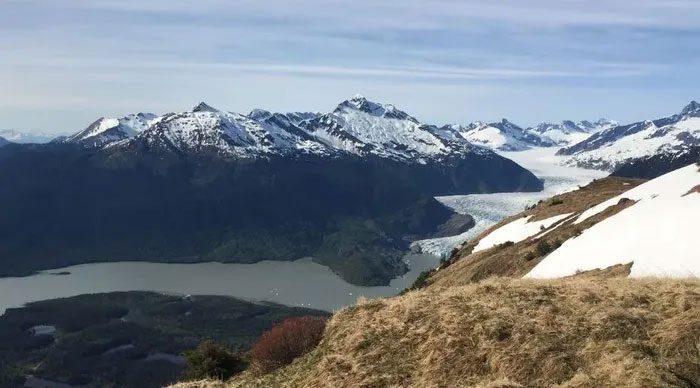If the ice is melting quickly in Alaska, a similar phenomenon may be occurring in many other regions, demonstrating that glaciers on Earth are approaching a dangerous threshold.
A new study published in the July issue of Nature Communications indicates that the Juneau Icefield is shrinking in Southeast Alaska, USA, serving as one of the key examples of how glaciers worldwide are nearing a critical point.
The study’s author, Dr. Bethan Davies, a senior lecturer at Newcastle University in the UK, noted that if ice is melting rapidly in Alaska, a similar situation could also be happening in various locations across the globe.

Mendenhall Glacier, one of dozens of major glaciers extending from the Juneau Icefield. (Source: Alaska News).
Dr. Davies also stated that the melting rate of glaciers throughout Alaska is currently faster than in some other regions of the world.
The study revealed that from 1770 to 1979, the amount of ice melting from the Juneau Icefield was relatively stable at about 1 km3 per year.
However, from 1979 to 2010, this figure increased to 3.1 km3 per year.
In just ten years, from 2010 to 2020, the amount of melted ice nearly doubled, reaching close to 6 km3 per year, equivalent to the volume of 2.4 million Olympic-sized swimming pools lost each year.
The thinning ice has led to the formation of the “Suicide Basin.”
Since 2011, flooding from Suicide Basin has impacted the densely populated Mendenhall Valley in Juneau, culminating in a historic flood during the summer of 2023.
Alaska climate expert Rick Thoman explained that this phenomenon occurs only when the entire glacier system is thinning at a significant and rapid rate.
This expert warned that as the ice in glaciers becomes increasingly thinner, the Suicide Basin will reach a point where the water from melting ice will no longer drain, although new basins may form.
Meanwhile, Dr. Davies noted that the water melted from glaciers accounts for about 25% of the global sea level rise. The remaining portion comes from melting ice in Antarctica, the Greenland ice sheet, and thermal expansion in the oceans.
The senior lecturer emphasized that her research and that of her colleagues are not only related to Alaska but also reflect similar situations at many glaciers worldwide amid the backdrop of a warming Earth due to climate change.
Gradually rising temperatures are leading to a series of processes that accelerate or amplify melting phenomena in glaciers.
One of these processes is the continuing reduction of snow on mountain peaks and plateaus during the summer months, which in turn makes the air warmer.
Climate expert Davies also suggested that while the ice on Earth has not yet crossed a dangerous threshold, a worst-case scenario could occur by the end of this century. If the melting process continues, the ice fields will struggle to recover.


















































